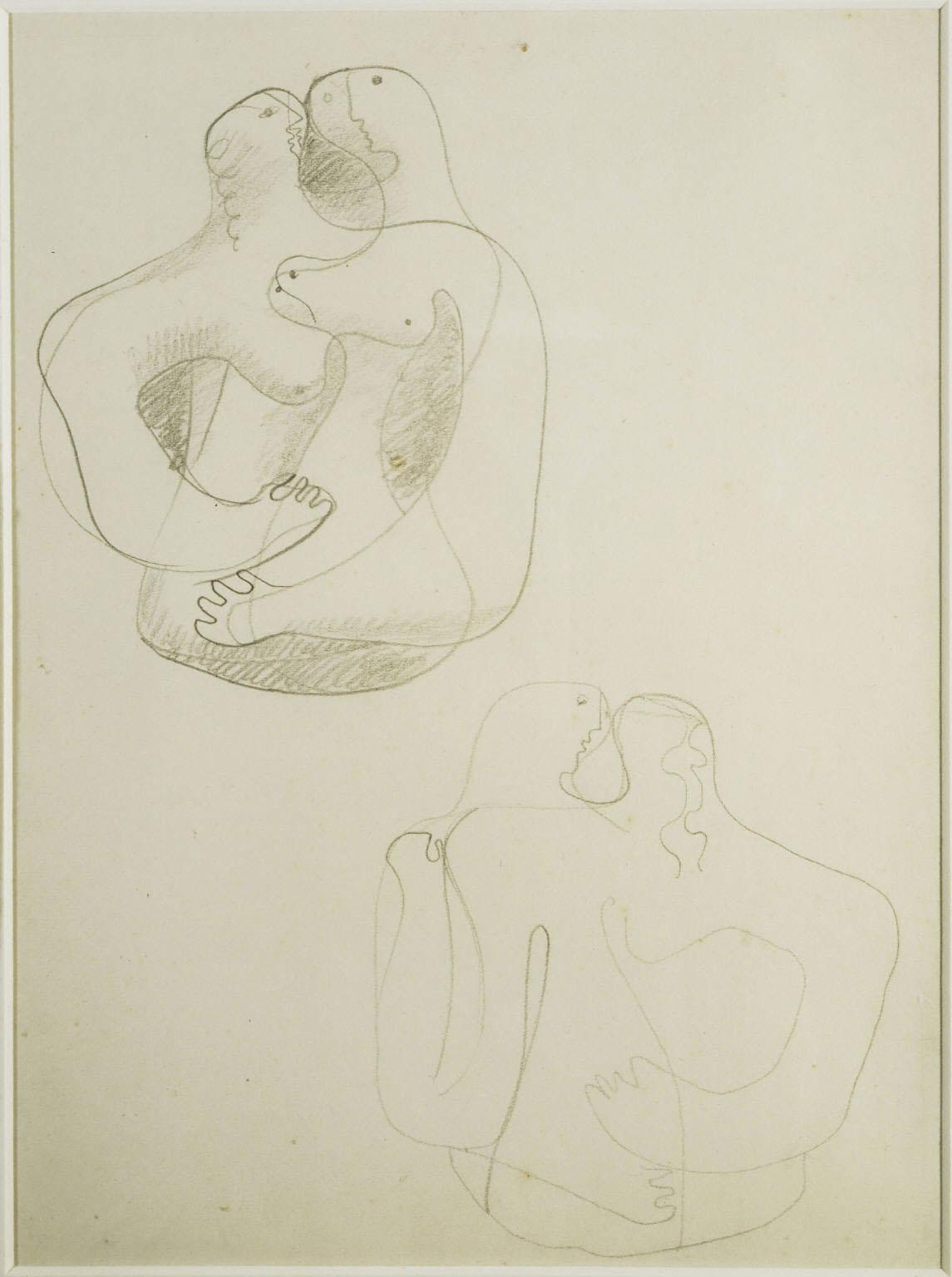Two Studies for Sculpture
Barbara Hepworth ( c. 1932 )

Throughout her life Hepworth used drawing to explore ideas for sculpture. The earliest surviving drawings that relate to her sculpture are from 1932 when Two Studies for Sculpture was created. In this drawing Hepworth explores a dominant theme in her work at the time, embracing figures. Their abstract treatment reveals Hepworth’s interest in the cubism of Picasso and the early work of Giacometti. This drawing may relate to a sculpture from the same year, Sculpture with Profile. Although not a literal, translation, the drawing suggests a three dimensional combining of forms.
Unlike her early sculpture and drawings that depict one or two related forms, Hepworth’s operation drawings, a series of 61 studies made between 1947 and 1949, are largely multi-figure compositions which emphasize the unity of the group. The idea for the operation series developed through Hepworth’s friendship with Norman Capener, the orthopedic surgeon who treated her daughter, Sarah, for osteomyelitis. Hepworth was invited to watch operations at the Princess Elizabeth Orthopedic Hospital in Exeter and later at the National Orthopedic Hospital and the London Clinic. She was allowed a pen and sterile pad to make notes, but the drawings were done from memory afterwards. She describes her first experience: “When I entered the operating theatre I became completely absorbed by two things: first, the extraordinary beauty of purpose and coordination between human beings all dedicated to the saving of life…; and secondly by the way this special grace (grace of mind and body) induced a spontaneous space composition, an articulated and animated kind of abstract sculpture very close to what I had been seeking in my own work.” The intensity of these works, such as Operation Drawing, reveals Hepworth’s personal and emotional involvement with human drama, a depth of feeling also articulated by Henry Moore in his famous London shelter drawings of 1940-42. Studies for Sculpture and Operation Drawing are the first works on paper by Hepworth to enter the collection, complementing the museum’s major purchase of its first sculpture by the artist Dual Form.